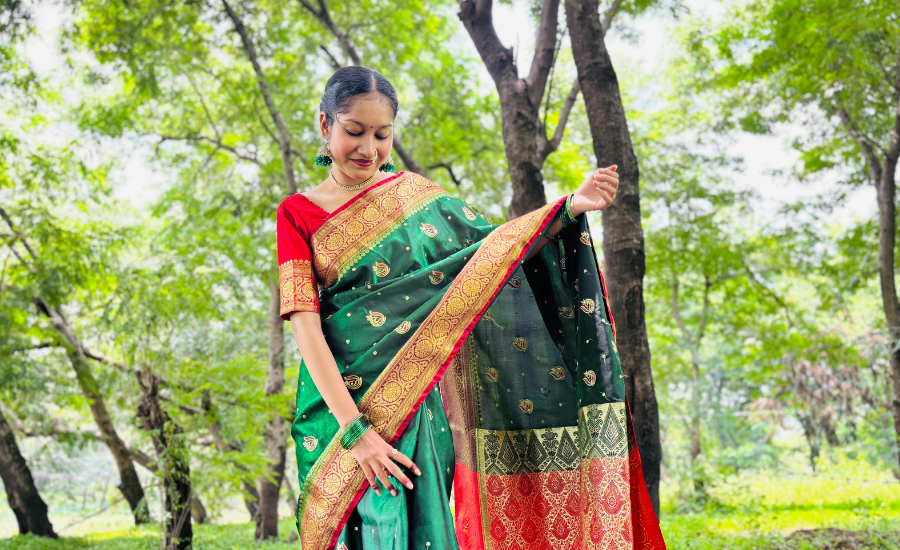India has always been a land of vibrant colors and intricate textiles, each region contributing its own unique craft to the nation’s rich cultural tapestry. Among these, Bandhani stands out as one of the oldest and most revered tie-dye traditions, tracing its roots back over 5,000 years. From the bustling streets of Gujarat to the serene lanes of Rajasthan, Bandhani has not only endured but thrived, evolving gracefully with the changing trends while retaining its traditional charm.
What Makes Bandhani Special?
The term “Bandhani” comes from the Sanskrit word “bandh”, meaning “to tie.” True to its name, Bandhani is created through a meticulous process of tying small portions of fabric with thread and then dyeing them, resulting in a dazzling array of patterns once the ties are removed. These patterns are not random—they are symbolic, often representing fertility, prosperity, and good fortune, making them a favored choice for weddings and festive occasions.
The Craftsmanship Behind Bandhani
Creating a Bandhani saree or Bandhani lehenga is no small feat. It is an art that requires patience, precision, and years of experience. Artisans first select high-quality fabrics like cotton, silk, or georgette, depending on the desired drape and texture. Tiny knots are made with thread, sometimes numbering in the thousands for a single garment, to resist the dye in specific areas. The fabric is then carefully dyed, often multiple times, to achieve rich and contrasting hues.
What sets Bandhani apart is its unique ability to blend tradition with contemporary aesthetics. Modern designers have introduced vibrant palettes and innovative motifs while still honoring the centuries-old techniques. This has allowed Bandhani dupattas to become a versatile accessory in wardrobes, complementing both ethnic ensembles and fusion outfits.
Regional Variations of Bandhani
Different regions in India bring their own distinctive touch to Bandhani. Gujarat is famous for its bright, geometric patterns, while Rajasthan leans towards intricate dots and floral designs. Each style carries its own cultural narrative, making every piece a storytelling masterpiece. Whether it’s a bride draped in a ruby-red Bandhani saree or a festive gathering where women adorn colorful Bandhani lehengas, the craft adds a sense of identity and tradition to celebrations.
Why Bandhani Continues to Captivate
The timeless appeal of Bandhani lies in its combination of artistry, heritage, and versatility. In a world dominated by machine-made fabrics, Bandhani represents the beauty of human touch and effort. Each knot, each pattern, is a testament to the dedication of the artisans who pour their skill and soul into the fabric. Additionally, Bandhani’s adaptability ensures it remains relevant—Bandhani dupattas can elevate a simple kurta, while a Bandhani saree can make a statement at weddings and formal events alike.
Moreover, as the global fashion scene increasingly embraces sustainable and handmade textiles, Bandhani has found admirers beyond Indian borders. Fashion enthusiasts and connoisseurs now seek these handcrafted pieces not only for their visual appeal but also for their cultural significance.
Preserving a Legacy
Supporting Bandhani is more than just a fashion choice—it’s an endorsement of a centuries-old craft. Every Bandhani saree, Bandhani lehenga, and Bandhani dupatta purchased contributes to sustaining the livelihood of artisans and preserving a tradition that has withstood the test of time.
In conclusion, Bandhani is not just fabric; it is a living legacy of India’s rich textile heritage. Its vibrant patterns, painstaking craftsmanship, and cultural resonance make it timeless. Whether you are draping a Bandhani saree, twirling in a Bandhani lehenga, or adding a pop of color with a Bandhani dupatta, you are not just wearing clothes—you are embracing a story that has traveled through centuries.


